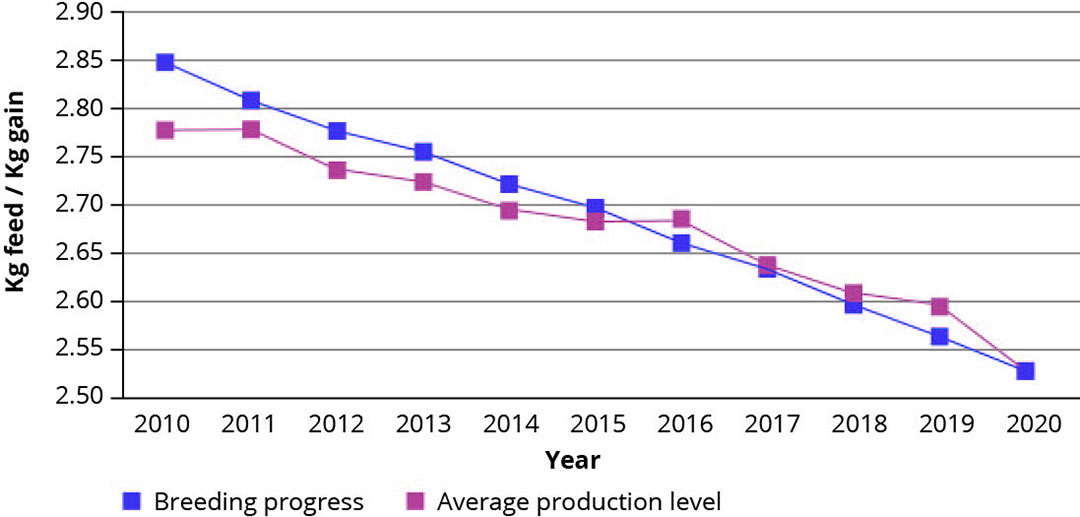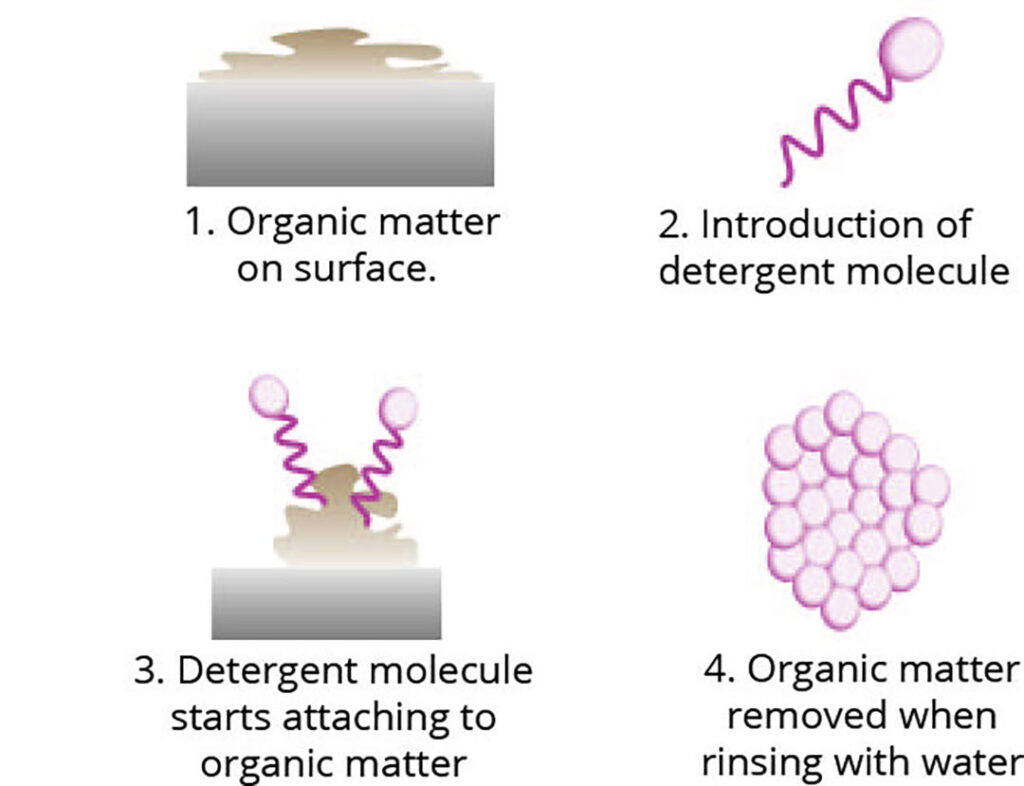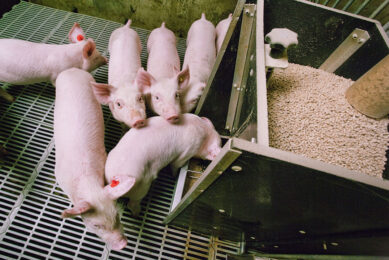Hygiene management: An effective alternative to ZnO

Zinc Oxide (ZnO) has been known to help control post-weaning diarrhoea and improve growth performance. The use of ZnO in weaned piglet feed, however, was officially banned in June, 2022 in the EU. Different farm measures have been advised by swine experts including biosecurity; hygiene management in particular, is emphasised as one of the key strategies to ensure that piglets are healthy and with minimum pathogen challenges while trying to adapt themselves to all stressors during the most challenging periods in their lives.
Pigs housed in dirty environments will struggle to perform as this could lead to reduced feed intake, growth rates and increased stress hormones compared to pigs housed in clean environments. Therefore, strict hygiene management is key to success in reducing the introduction and spread of pathogens. Cleaning & disinfection (C&D) at the end of the production cycle in the farrowing house and the post-weaning unit should be performed properly to ensure a clean environment before piglets are placed. A C&D protocol should be carefully designed to meet each farm’s conditions and challenges.
However, an effective protocol generally consists of 5 essential steps as follows:
 Dry cleaning
Dry cleaning
Start by removing all small tools and equipment from the room. This makes cleaning easier, especially in farrowing units. It is important to remove all debris and organic matter as much as possible in this step as this will help reduce water consumption and save time overall.
 Soaking
Soaking
Start soaking within 3-4 hours after the animals are moved out of the building. This step can be done manually or using an automatic misting system with spinning nozzles installed in the room. Interval soaking is recommended by spraying water for 5 minutes and pausing for 15 minutes for a minimum period of 2 hours. 12 hours is the optimal soaking time.
Figure 1 – Biofilm formation.

 Applying detergent
Applying detergent
The use of a detergent in the C&D protocol significantly improves the quality of cleaning and saves time and water and enhances the disinfection efficacy. Using a detergent could reduce time spent in this step by 1.5 hours in the farrowing unit, 6.5 hours in the post-weaning rooms, and 15 hours in the fattening room, for 100 producing sows per year!
A detergent can be formulated by using a surfactant or a mixture of surfactants alone or with other ingredients to increase cleaning power. Surfactants are the most important element of cleaners: they act as a wetting agent by reducing water surface tension and penetrating and detaching organic materials from surfaces including fats in faecal matter. They also facilitate the destruction of biofilms (Figure 1 and 2). Apply the detergent ideally by foam application using the concentration and application rate recommended by the manufacturer, allowing a contact time of 20-30 minutes.
Figure 2 – The mechanism of action of detergent.

Why do we need to remove biofilm before disinfection?
Biofilms are communities of microorganisms surrounded by a slime layer of extracellular polymeric substances which adhere to each other or a surface. Biofilm formation starts with biofilm-forming organisms, typically consisting of many species such as E. coli, Pseudomonas, and Salmonella, adhering to a surface.
The presence of biofilms can interfere with disinfection efficacy as:
- They act as a physical barrier that prevents the disinfectant from penetrating internal layers
- The biofilm components including proteins, nucleic acids, or carbohydrates can also impair the efficacy of the disinfectant
- Some bacteria inside the biofilms are in a state of stress and inhibit the activity of the disinfectant.
 Rinsing
Rinsing
Use appropriate equipment for the task and use high pressure with a pump good flow rate (20-25 L/min) and consider using medium to low pressure with a rotary nozzle. Rinse from the top to the bottom and from the back of the room to the entrance.
Monitoring cleaning procedures can be performed by visual inspection. After rinsing, all surfaces must be visually clean. Microbiology tests such as surface swabbing or agar plats can be used to ensure that the cleaning protocol is effective. A minimum of 10 sampling areas is recommended.
 Disinfection
Disinfection
Disinfectant selection in swine farming concerns numerous choices as in farm conditions environmental parameters have a great impact on the activity of chemical solutions such as different types of pathogens, water quality (water hardness in particular), temperature, and organic matter contamination. Therefore, the process of careful disinfectant selection should be made with manufacturers and includes possible factors affecting disinfectant efficacy before deciding as different application or farm conditions may require different chemistries.
When applying a disinfection solution, strictly follow the usage guidelines of the appropriate concentration and application rate indicated on the product label or according to the manufacturer’s advice and allow sufficient contact time to ensure the best disinfection efficacy.
Disinfectant solutions can be applied with a wet spray or foam. Apply from the top of the housing to the floors, engaging all equipment and surfaces, finishing with the floors, and exiting the housing.
A second disinfection application by thermal fogging may also be performed to help improve the disinfection efficacy, especially in hard-to-reach areas such as ceilings or slurry pits. Ensure all other areas outside the pig rearing rooms including the corridors and feed and ventilation systems are well cleaned and disinfected.
Good farm hygiene minimises pathogen challenges
The use of ZnO helps alleviate post-weaning diarrhoea problems, however, without directly targeting the cause of the problem which can come from various factors. As E. coli is the most common cause of diarrhoea in piglets, improving farm hygiene management therefore, helps minimise challenges of this pathogen and provide a clean environment for the piglets during the critical periods of their lives.
References are available from the author on request.







